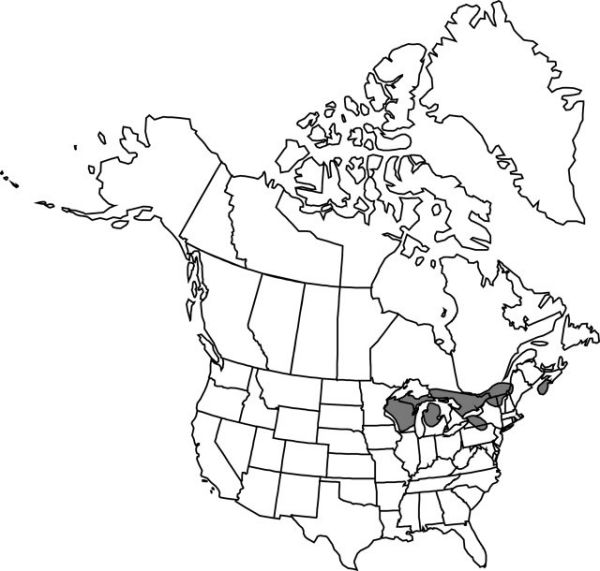Spiranthes casei
Rhodora 76: 527, figs. 1–4. 1974.
Plants 7–44 cm. Roots few–several, descending, slender to somewhat tuberously thickened, mostly to 0.5 cm diam. Leaves persisting through anthesis, basal and on proximal portion of stem, ascending to spreading, ovate-lanceolate to linear-lanceolate to oblanceolate, to 20 × 2 cm. Spikes loosely spiraled, usually 5 or more flowers per cycle of spiral; rachis moderately to densely pubescent, some trichomes capitate, glands obviously stalked. Flowers ivory to yellowish white or greenish cream, strongly nodding, curved downward throughout lengths, scarcely gaping, urceolate-tubular; sepals distinct to base, 5.2–8 mm; lateral sepals slightly spreading, apex straight; petals creamy white to greenish white, ovate-elliptic to obovate, 3.9–7.6 mm, apex obtuse; lip often darker centrally, 4.1–8 × 3.2–5.1 mm, glabrous; veins several, branches parallel; basal calli incurved, prominent, 0.7–1.1 mm; viscidia linear to linear-lanceolate; ovary 4–7 mm. Seeds partly or wholly polyembryonic.
Distribution

e, c North America along Canadian and Unites States border.
Discussion
Varieties 2 (2 in the flora).
Selected References
None.
Key
| 1 | Lip ovate to ovate-oblong, apex truncate, margin thin, delicately crisped and fringed. | Spiranthes casei var. casei |
| 1 | Lip ovate, apex acute, margin thick and inflexed. | Spiranthes casei var. novaescotiae |